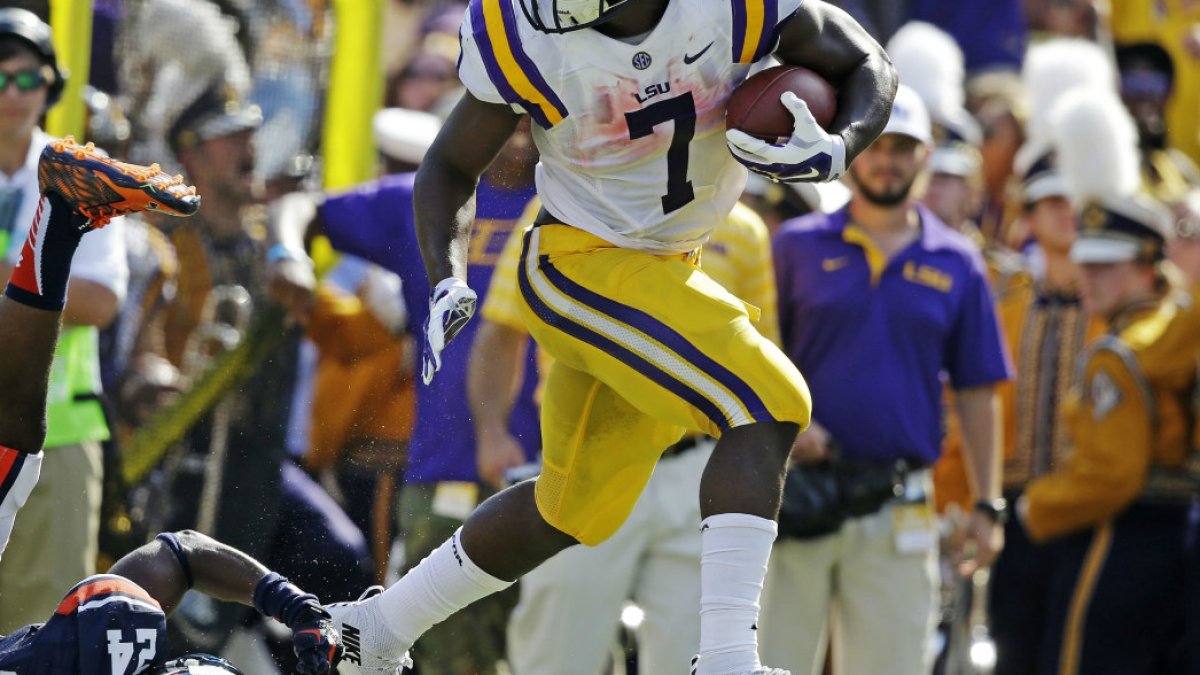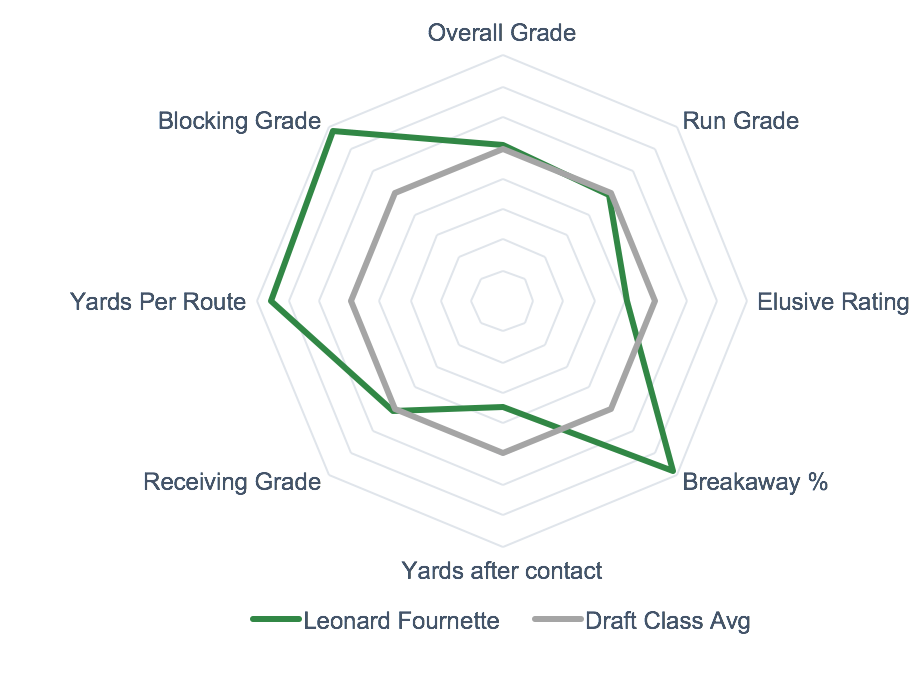Former LSU Tiger Leonard Fournette is considered by many to be the top running back in the draft class. Fournette’s blend of size, speed, power, and overall athleticism is rare, and his 2015 season showed the type of production he is capable of. However, questions about his vision, pacing, and lateral agility as a runner, whether he is scheme-diverse, and how much impact he can have in the passing game are not unreasonable. While he doesn’t top our running back rankings, he is one of three at the position that we see as being worthy of a first-round draft pick. With each of the top running backs having fairly different strengths and skill sets, a case could be made for each as the top back depending on what a team is looking for.
What he does best
- Powerful and explosive runner who hits the point of attack hard and will actively take on defenders.
- Excellent at finishing runs and keeping his feet churning through contact to continue gaining yards.
- At his best in 2015, Fournette was capable of stringing multiple moves together in order to better maximize his runs.
- Even at his size, he possesses the top-end speed needed to break off big runs for touchdowns.
Best fits
The Panthers are one of the few teams that still run a significant amount of power and counter run concepts, both of which are a good mesh for Fournette’s downhill running style. They also run a lot of read-option with QB Cam Newton. Newton’s running threat can easily hold the optioned defender long enough to give Fournette more room to run. In addition, when the option defender can make a decision quick enough, he will still be trying to bring down Fournette from the side rather than head on, making it even easier for Fournette to gain yards through contact. If Carolina thinks that he is not as effective running out of shotgun compared to having the quarterback under center, they are probably the most apt to incorporate more pistol formations while continuing to use their same run concepts. From a personnel standpoint, Jonathan Stewart turned 30 years old last month, and neither Fozzy Whittaker nor Cameron Artis-Payne is likely to be the Panthers’ future No. 1 running back once the team moves on from Stewart.
As of 8 a.m. Monday, there is no new news regarding a trade being completed with Seattle for Marshawn Lynch. If that deal does get finalized soon, it still shouldn’t preclude drafting Fournette if he were to be available once the Raiders are on the clock with the No. 24 overall pick. Lynch turns 31 later this week and we’ve seen how quickly running backs can fall off once they reach their 30s. Even if it doesn’t happen this year, it’s unlikely that he can continue at an elite level for many more seasons after more than 2,600 career touches, including four consecutive seasons with 300-plus touches leading up to an injury-plagued 2015 season. The Raiders utilize a good mix of blocking schemes up front, but the overarching theme is getting backs running downhill early in the play. Oakland has a top-five run-blocking offensive line, which would curtail any concerns regarding Fournette’s vision.
Schematically, the Giants would be a solid fit for Fournette. No team ran a higher percentage of power-concept run plays in 2015 than the Giants and power and inside-zone schemes accounted for the overwhelming majority of their runs. Other needs on both sides of the ball are greater, but the Giants definitely could use an upgrade to their run game, too. Fournette and last year’s fifth-round draft pick Paul Perkins would complement each other’s skill sets nicely.
One thing to consider against the fit, though, is how often the Giants use both shotgun and 11-personnel. The difference between running out of shotgun versus under center can sometimes get overstated, but it does have some clout when it comes to pacing and cutback angles for running backs. While there are many factors at play and alignment is not the only one here, in each of his three seasons, Fournette averaged anywhere from 1.2 to 2.0 fewer yards per carry out of shotgun than he did while the quarterback was under center, a theme that is typically the opposite for top college backs who have significant carries from both spots.




 © 2024 PFF - all rights reserved.
© 2024 PFF - all rights reserved.